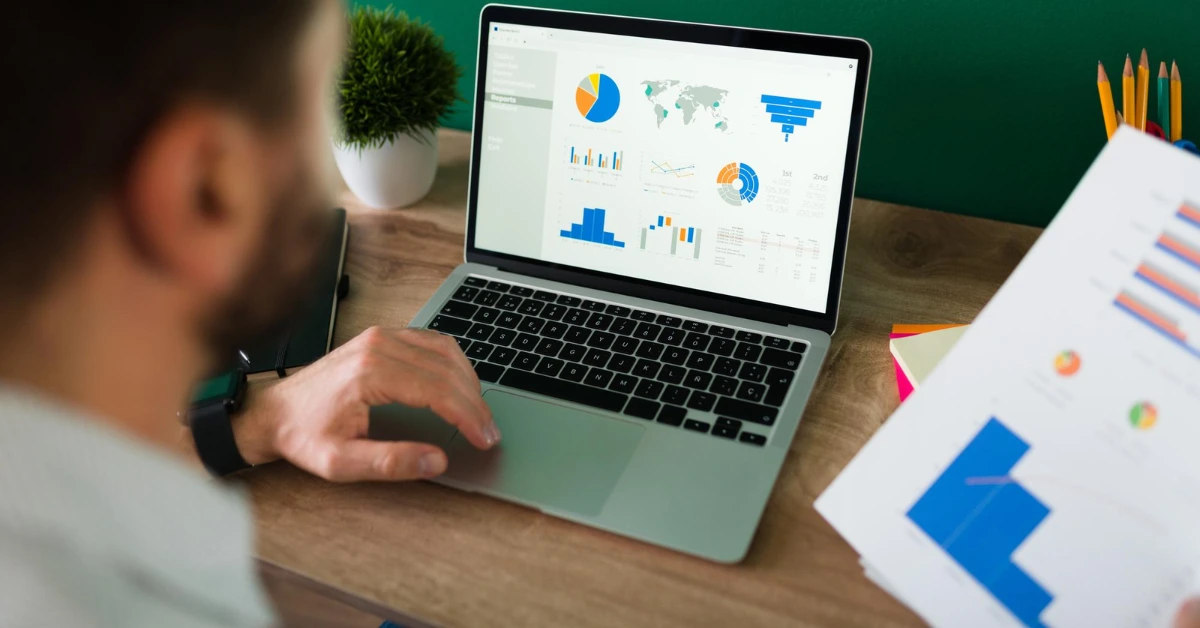In web analytics, page views and visits (often called sessions or unique visits) are fundamental metrics for measuring traffic. A page view counts each time a page is loaded or reloaded in a browser. In contrast, a visit (or session) represents one user’s continuous browsing on the site, regardless of how many pages they view. For example, if a user navigates through five pages on a website during one trip, analytics would log 5 page views and 1 visit. These metrics help gauge both content interest and audience reach.
What Are Page Views?

A page view is recorded every time a webpage is loaded or reloaded in a visitor’s browser. This includes repeated views of the same page by the same user. In other words:
- If a user refreshes a page, it adds another page view.
- If a user visits multiple different pages, each counts as a separate page view.
- Even if one visitor views the same page 10 times, that page accrues 10 page views.
Page views are a common key performance indicator (KPI) in digital analytics. Marketers track page views to see which content is drawing attention. For instance, a product page with many page views is likely resonating with visitors. As Indeed explains, “page views … show what content interests audiences”. In short, high page view counts indicate popular or frequently accessed pages.
What Are Visits (Sessions)?

A visit (or session) is a single user’s journey on your site during a period of continuous activity. By default, web analytics (like Google Analytics) treat a session as starting when a user first arrives and ending after 30 minutes of inactivity. Key points about visits/sessions:
- A session begins the moment a user lands on the site (from any source) and ends after a period of inactivity (typically 30 minutes).
- All pages viewed and actions taken within that time window count as a single visit.
- If the same user returns after 30 minutes of inactivity, analytics counts it as a new visit.
- A visit is essentially “the container for the actions a user takes” on your site.
Visits help measure how many individual engagements your site gets, not just page hits. For example, if Alice clicks through three pages before leaving, that’s 1 visit and 3 page views. If she returns an hour later and browses again, that’s a second visit.
Some platforms use the term unique visitor (or user) to mean the count of distinct people (or devices) reaching the site, usually tracked via cookies or IP. Indeed defines a unique visitor as “a distinct individual who views a page… only counted once” regardless of repeat visits. In practice, “visits” track sessions, while “unique visitors” count people. One visitor can generate multiple visits (sessions) over time.
Page Views vs. Visits: Key Differences
Understanding the difference between page views and visits is crucial. In summary:
- Counting: Page views count every page load, whereas a single visit can include many page views. Reloading or navigating to another page bumps up the page view count but does not increase the visit count.
- Multiples: One user session (visit) may generate multiple page views. For example, 10 page views could come from just 1 visit if a user browses ten pages.
- Reloads: If a user reloads the same page, page views increase, but visits do not.
- Source vs. Engagement: Some analytics tools define visits differently. For instance, HubSpot notes that every page visit is a page view, but not vice versa – in HubSpot’s terms, a “page visit” only starts when arriving from an external link. In most contexts, however, a visit/session simply means a new user session.
- Behavioral Clues: The ratio of page views to visits reveals user behavior:
- High page views per visit suggests engaged users clicking through content.
- High visits with low page views means many users aren’t exploring beyond their entry page (a potential engagement issue).
- Low visits but high page views could indicate the same small audience is repeatedly viewing pages (possibly reloading content).
Indeed highlights that if your site has “high page views combined with low visits,” it might mean “the same people [are] reloading pages”. Conversely, “a high number of page visits with low page views” may indicate users aren’t navigating to multiple pages. In practice, analyzing both metrics together gives a fuller picture: e.g. many visits with few page views could signal a design or content issue that discourages browsing.
Other Related Metrics
Beyond page views and visits, several related metrics help contextualize website performance:
- Unique Visitors (Users): The number of individual people (or devices) who visit your site over a period. Each person is counted only once. This gauges audience size. (Note: one unique visitor can generate multiple visits over time.)
- Sessions (Visits): As above – total number of individual sessions. Google Analytics calls these “sessions,” while some older tools call them “visits.”
- Unique Pageviews: In Google Analytics, unique pageviews count each page only once per session. If a user views the same page 5 times in one session, that’s 5 pageviews but 1 unique pageview. This metric filters out page reloads in the same visit.
- Bounce Rate: The percentage of visits in which the user left after viewing only one page. In other words, they “bounced” without clicking further. Bounce rate is a key engagement metric. A high bounce rate (e.g. 70%) means most visitors left after one page, indicating low engagement. Bounce rate can affect SEO and user experience considerations.
- Pages per Session: The average number of pages a user views per visit (calculated as page views ÷ visits). This tells you how deeply users explore your content.
- Session Duration: How long a session lasts. Longer sessions typically indicate more engagement.
For example, if a site has 100 visits and 300 pageviews, the pages-per-session is 3. If the bounce rate is 50%, it means half of those 100 visitors only saw one page before leaving. Combined, these metrics tell a richer story than any single one.
Why Page Views and Visits Matter
Both metrics serve different purposes in analysis:

- Page Views measure content popularity and potential ad impressions. Advertising-driven sites often care about page views, since each view could display an ad. High page views also signal engaging or valuable content.
- Visits (Sessions) measure audience reach and traffic volume. A growing number of sessions means more people finding and using your site. For ecommerce or lead generation, each new visit is a potential customer.
- Unique Visitors show how many individual people you’re reaching.
- Marketers tailor strategies to goals: a blog might optimize for pageviews by improving content quality and linking, while an online store might focus on getting new visits/customers.
As one analysis notes, tracking both is key: “Lots of page views might mean your content is engaging… On the flip side, a high number of unique visitors shows you’re pulling in a broad audience”. For instance, if you see many page views but few unique visitors, it could mean a loyal few users keep returning (good retention but low growth). If you have many visitors but low pageviews per visit, it suggests people aren’t sticking around, so you may need to improve navigation or calls-to-action.
Understanding these metrics lets you refine your SEO and content strategy. For example:
- If pageviews are low on a new article, you might revise the title or promotion strategy.
- If visits are high but bounce rate is high too, you might optimize landing pages for relevance and clarity.
- If pages per session are low, consider adding more internal links or clearer next steps.
Examples
- Simple scenario: A visitor (User A) lands on your homepage, clicks to a product page, then to the checkout page, and leaves. Analytics registers 1 visit (session) and 3 page views.
- Reloads: User B visits the blog, reads an article (1 pageview), then refreshes the page for updated content (now 2 pageviews in the same visit). If they then close the browser, it’s still 1 visit.
- Multiple sessions: User C comes to your site today (1 session), leaves, and returns 2 hours later (another session). Analytics shows 2 visits for User C. If User C viewed 4 pages each time, that’s 8 pageviews total.
- High bounce: User D hits a landing page and leaves immediately. That’s counted as 1 visit and 1 pageview (a bounce).
Analyzing these patterns helps highlight issues or successes. For instance, if many users behave like D (single-page visits), consider why they left so quickly—was the page not relevant, slow to load, or missing clear calls-to-action? Likewise, if certain pages yield many views per visit, they may be strong content pillars worth further promoting.
Conclusion
Page views and visits are distinct but complementary metrics. Page views count each time content is loaded, reflecting engagement with specific pages. Visits (sessions) count each individual user’s trip to your site, reflecting overall traffic and audience size. By tracking both—and related metrics like unique visitors, bounce rate, and pages per session—you gain a complete picture of site performance and user behavior. This deeper understanding enables you to optimize content, improve user experience, and measure the impact of your SEO and marketing efforts. Always interpret page views and visits together to draw actionable insights – for example, balancing quantity (visits) with quality (engagement per visit) to achieve your site’s goals.









Share